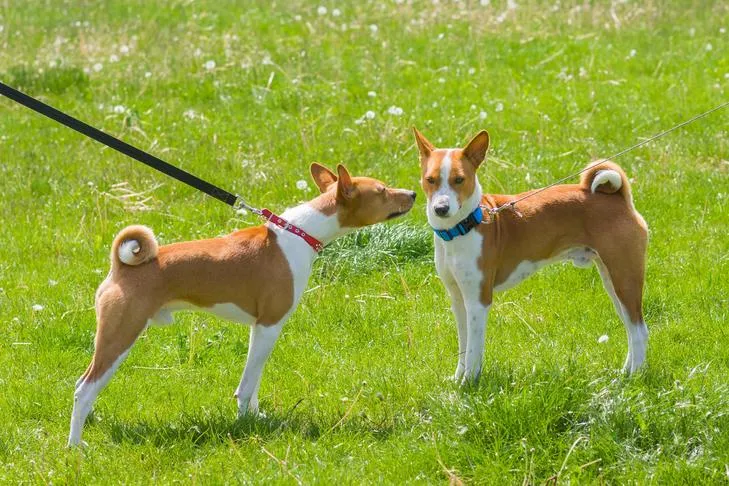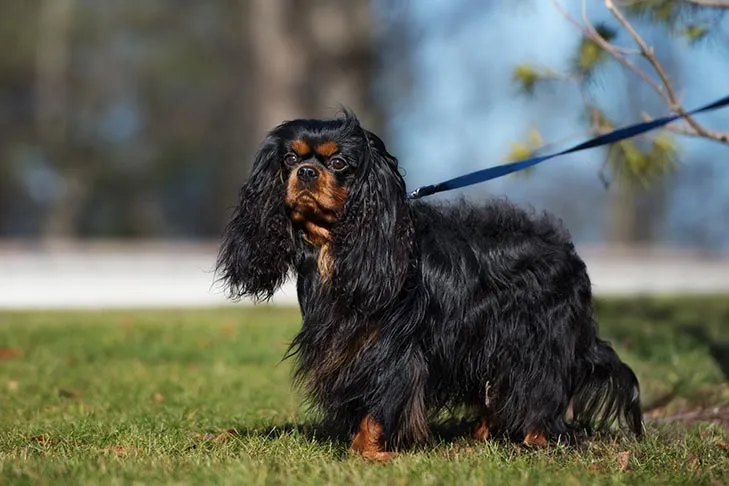Learning How To Get Puppy To Stop Pulling On Leash is one of the most common and crucial training challenges new dog owners face. While a leisurely walk with your furry companion might seem like a simple joy, an uncontrolled puppy constantly pulling on the leash can quickly turn that experience into a frustrating struggle, and even a safety hazard. Not only can it be uncomfortable or lead to injuries for you, especially with a larger or energetic puppy, but it also prevents your puppy from learning proper leash manners and enjoying walks in a structured, calm way.
Leash pulling isn’t just a bad habit; it’s a learned behavior often reinforced unknowingly. Puppies naturally want to explore the world at their own pace, and for many, that means rushing forward to discover new sights and smells. Without proper guidance, they quickly learn that pulling gets them where they want to go. Fortunately, with consistent application of simple techniques and a focus on positive reinforcement, you can effectively teach your puppy to walk politely on a loose leash. This guide will walk you through proven strategies to transform your walks from a tug-of-war into a harmonious experience for both you and your growing puppy. Addressing this behavior early is key to developing good habits, much like learning how to stop puppy jumping on couch or other common puppy challenges.
1. Always Reward Good Leash Behavior
Positive reinforcement is the cornerstone of effective puppy training, and it’s essential when teaching your puppy to stop pulling. Puppies, like all dogs, are more likely to repeat behaviors that earn them a reward. Whether that reward is a tasty treat, enthusiastic praise, or even the chance to sniff something interesting, consistent reinforcement for walking politely will solidify the desired behavior. If you only react when your puppy pulls and take good behavior for granted, they won’t understand what you want them to do.
On every walk, carry a supply of high-value treats and be ready with cheerful praise. Whenever your puppy walks beside you with a loose leash, immediately reward them. In the initial stages, reward frequently and generously. As your puppy’s loose-leash walking skills improve, you can gradually reduce the frequency of treats and incorporate “life rewards,” such as a moment to explore a tree trunk or a controlled greeting with another calm dog, as a reward for their good manners.
2. Never Let Your Puppy Walk When They Are Pulling
The primary reason puppies pull is because they want to move forward. If you allow them to continue walking while the leash is taut, you are inadvertently rewarding their pulling behavior. This teaches them that pulling is an effective strategy to get where they want to go, reinforcing the very habit you’re trying to break. Therefore, the cardinal rule of loose-leash training is simple: never walk when your puppy is pulling.
The moment you feel tension on the leash, stop immediately. Plant your feet firmly and become an immovable object. Do not move forward until the leash goes slack. This might mean you stand still for a few seconds, or even a minute or two, especially in the beginning. Your puppy will eventually look back or turn to you, wondering why you’ve stopped.
 Two Basenji puppies, one on a leash, meeting in a grassy field, demonstrating proper leash etiquette when encountering other dogs.
Two Basenji puppies, one on a leash, meeting in a grassy field, demonstrating proper leash etiquette when encountering other dogs.
3. Wait for a Loose Leash Before You Walk
Once you’ve stopped because of pulling, how do you know when it’s okay to resume walking? The signal is a loose leash. The leash should hang in a “J-shape,” indicating there is no tension. Crucially, your puppy should also redirect their attention back to you. This might take time initially, but your puppy will soon realize that pulling stops the walk, and a slack leash (and attention to you) gets it going again.
When the leash slackens and your puppy looks at you, immediately praise them and reward with a treat right at your side. Then, calmly continue the walk. You might find yourself stopping and starting every few steps at first, but with consistency, your puppy will quickly learn that a loose leash keeps the walk moving forward. This technique is fundamental to teaching your dog how to teach my dog not to pull effectively.
4. Incorporate Life Rewards on Your Walk
For your puppy, walks are not just for bathroom breaks; they are vital for physical exercise and mental stimulation. Training to stop leash pulling can sometimes feel restrictive, but you can enhance the training process by strategically using “life rewards.” These are everyday things your puppy enjoys, such as the chance to sniff a bush, greet a friendly person, or investigate a new scent.
By incorporating these natural desires into your training, you make polite walking even more rewarding. For example, if your puppy walks politely on a loose leash for a set distance (say, 10 feet), release them with a verbal cue like “Go sniff!” for a few minutes. This reinforces that good behavior leads to enjoyable experiences, convincing your puppy that walking nicely truly pays off. This principle applies to other training areas too, such as when you train dog to not jump on couch.
5. Walk at a Good Pace
Often, puppies pull because their human companions walk too slowly for their energetic pace. Even small breeds can have surprisingly fast little legs and a strong desire to get moving. To help your puppy feel more engaged and less inclined to pull, try to choose a walking pace that is comfortable and brisk for both of you.
While the ultimate goal is for your puppy to match your speed, during the training phase, a slightly quicker, more engaging pace can make it easier for them to learn not to drag you. A lively pace helps maintain their focus and makes the walk more enjoyable, reducing the urge to pull ahead.
6. Be Consistent With Your No-Pulling Rule
Consistency is paramount in all puppy training, and it’s especially critical when teaching how to get puppy to stop pulling on leash. It can be tempting to let your puppy pull when you’re in a hurry, it’s cold, or you just need them to relieve themselves quickly. However, every single time you allow your puppy to pull, you are reinforcing the unwanted behavior and undermining all your previous training efforts.
You must adhere to the no-pulling rule without exception, regardless of the circumstances. If you’re pressed for time or the weather is bad, consider letting your puppy do their business in a confined yard or at the curb, and save dedicated loose-leash training for when you have ample time to be patient and consistent. Inconsistency sends mixed signals and will significantly prolong the training process. This commitment to consistency also applies when you’re trying to figure out how to train my dog to stay off the furniture.
 A curious Beagle puppy enthusiastically pulling on its leash to sniff the ground during an outdoor walk, illustrating common leash pulling behavior in young dogs.
A curious Beagle puppy enthusiastically pulling on its leash to sniff the ground during an outdoor walk, illustrating common leash pulling behavior in young dogs.
7. Keep Training Sessions Short and Fun
Working with a determined puppy puller can be frustrating, especially when it feels like you’re not making much progress. It’s easy for both you and your puppy to get disheartened. To avoid this, keep your loose-leash training sessions short, frequent, and positive. Puppies, especially young ones, have very short attention spans. Asking too much too soon will lead to frustration for both of you and can make training counterproductive.
Instead of focusing on covering a certain distance, prioritize the quality of the walk. Your goal should be to achieve loose-leash walking, even if it’s only for a short stretch down the driveway or to the neighbor’s house. End each session on a positive note, celebrating small successes to keep your puppy engaged and eager for the next training opportunity. This approach fosters a love for learning, which is also helpful if you’re trying to master how to keep your dog from jumping on the couch.
8. Be Interesting and Engaging on Walks
The world is a marvelously exciting place for a puppy, filled with endless new sights, sounds, and an irresistible symphony of smells. These myriad distractions constantly compete for your puppy’s attention and encourage them to pull you along. If you are distracted by your phone or otherwise disengaged, your puppy has little reason to focus on you.
To counteract these external temptations, you need to become the most interesting thing on the walk. Talk to your puppy in an upbeat tone, praise them, and offer treats regularly. Incorporate quick training breaks for simple commands like “sit” or “watch me,” or even a brief game. By staying interactive and unpredictable, you encourage your puppy to pay attention to your cues, making them more likely to follow your lead rather than dragging you towards the next exciting discovery.
9. Stay Calm
Walks can present many emotionally charged situations for your puppy, from encountering a friendly neighbor to the sudden appearance of a barking dog. Whether your puppy is overly excited or becomes frightened, your emotional state can significantly influence theirs. Dogs are incredibly adept at reading human emotions, and your tension or frustration can easily transmit down the leash, escalating their excitement or intensifying their anxiety.
To help your puppy remain calm and responsive, it’s crucial that you stay calm yourself. By maintaining a relaxed demeanor, you communicate to your puppy that there’s nothing to be overly concerned or excited about. A calm puppy is much more likely to listen to your commands and exhibit appropriate leash manners, making the walk a more pleasant experience for everyone.
 A calm Cavalier King Charles Spaniel puppy walking politely on a loose leash outdoors, demonstrating the desired behavior after successful training to stop pulling.
A calm Cavalier King Charles Spaniel puppy walking politely on a loose leash outdoors, demonstrating the desired behavior after successful training to stop pulling.
10. Engage Your Puppy In Distracting Situations
Distractions like other dogs, squirrels, or even unfamiliar people can easily cause your puppy to forget their leash manners and revert to pulling. Your puppy might pull to get closer to something exciting, or pull away from something they find suspicious or intimidating. In either case, all the hard work on loose-leash walking can vanish in an instant.
To manage these situations, proactively engage your puppy before they become overwhelmed by a distraction. As soon as you spot a potential distraction, gently call your puppy’s name, offer them treats, or ask for a simple command like “sit” or “look at me.” These exercises redirect their focus onto you, keeping them engaged and less likely to react impulsively to external stimuli. The “watch me” cue, in particular, is powerful for gaining their eye contact and attention, allowing you to guide them past the distraction calmly. Being proactive is key; aim to capture their attention before the distraction fully registers.
By implementing these consistent, positive training methods, you can successfully teach your puppy how to get puppy to stop pulling on leash and enjoy harmonious walks together. Remember that patience and persistence are your greatest tools, and celebrating every small victory will build your puppy’s confidence and strengthen your bond. With dedication, those once-dreaded walks will transform into cherished moments of connection and exploration. If you find yourself needing more tailored guidance, consulting with a professional dog trainer can provide invaluable support.
